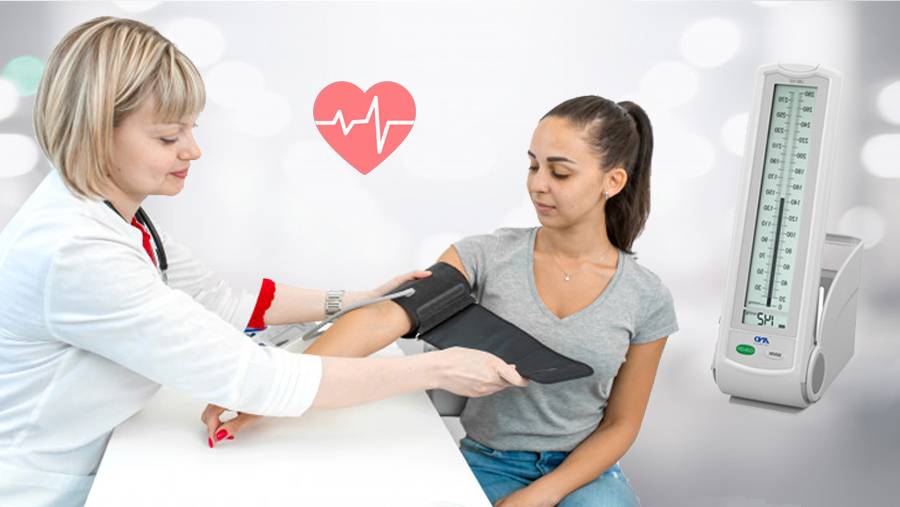
Hello
Select Address

Each one of us have used sphygmomanometers or blood pressure meters or BP monitors at least once in our lifetime! However, such a difficult-to-pronounce nomenclature- “sphygmomanometers” is not commonly used. Your blood pressure comprises of two numeric figures – the systolic (higher number) and the diastolic pressure (lower figure). The former is the pressure when the heart pumps blood into the arteries and the latter is when the heart’s ventricles prepare for the next pump.
How does a sphygmomanometer function?
Almost all variants of sphygmomanometers function upon a single principle. Before getting into how a blood pressure monitor works, there are certain things the user should be careful about –
• The blood pressure cuff needs to be ideally sized covering the arm’s circumference. The cuff should be so wrapped such that its lower end is just an inch above the antecubital fossa.
• The stethoscope now needs to be placed lightly just below the lower edge of the cuff. That places the stethoscope just above the brachial artery.
• The actual action starts now; the cuff is inflated up to 180mmHg and then released slowly @ 3mm/sec. The user now needs to pay meticulous attention to the dial of the sphygmomanometer as well as listen to the stethoscope carefully. The first knocking sound (Korotkoff) is the systolic pressure, and when the sound almost disappears is the diastolic pressure.
It is at times highly advisable to repeat the same procedure on the opposite arm. The results may slightly vary, but any major difference would rather hint at a possible failure in the recording method! It is normally considered that 120/80mmHg is the correct blood pressure.
What are the types of Sphygmomanometers?
They are of 3 types of blood pressure monitoring devices – Digital, Aneroid, and Mercury. As the name suggests, the digital variant is automated and does not require anyone to operate the cuffs or listen to the stethoscope for the Korotkoff sound! However, digital BP monitors or self-measured blood pressure monitoring (SMBP) are preferred by people suffering with hypertension and require regular measurement of their blood pressure during the day.
The other 2 types fall under the manual category. The aneroid variant uses a dial to display the readings whereas the mercury device uses a column to display the increase and decrease of blood pressure. The only exception is that the mercury device needs periodic calibration.
Does an Automatic Blood Pressure machine yield less accurate results?
Usually, individuals using the automated device have been skeptical about the results. If you ever felt that the reading displayed on your machine is too high or too low? The only rescue to such situations is the use of sphygmomanometers and a stethoscope, preferably by a medical professional.
So, why do monitors display higher numbers for a lot of users?
Finally, BP monitoring results depend largely on your current situation – how long have you taken rest before testing, your overall stress level, and your previous activity. It is therefore clinically recommended that you sit without talking for at least 5 minutes before the process. Second most important recommendation is that a digital monitor if in use should be checked against mercury or an aneroid sphygmomanometer and should be calibrated at least once a year in order to ensure that they give accurate results!